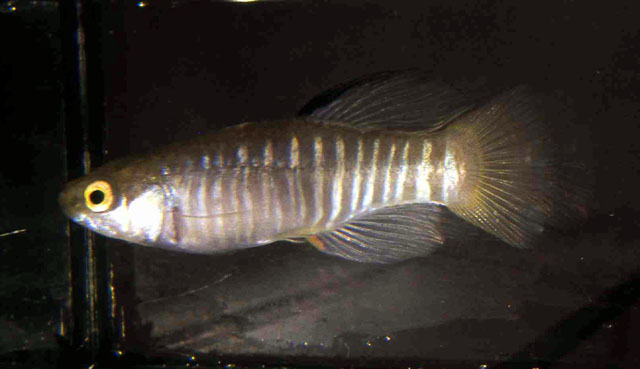| Aphaniidae (Oriental killifishes) |
| 6.8 cm TL (male/unsexed) |
|
benthopelagic; freshwater; brackish; marine; pH range: 6.5 - 7.5; dH range: 8 - 10, non-migratory |
| Europe: France, Italy, Slovenia, Croatia, Albania, Greece and Montenegro. Mediterranean basin: North Africa from Egypt to eastern Algeria, sometimes in landlocked basins; through the Suez Canal into the Bitter Lakes, Egypt (Ref. 3788). Asia: Turkey. |
|
Anal soft rays: 9. Can be diagnosed from other species of Aphanius, Valenciidae and Fundulidae in Europe by having the following characters: males have pale yellow to yellow-orange caudal fin, in some populations with a wide dark submarginal bar, 8-15 dark blue to grey bars on a silvery background, bars usually regularly shaped and set; females possess 11-17 short dark brown bars on sides, over a faint greyish midlateral stripe, 24-29 scales in midlateral series on body, and pectoral fin with 14-15 rays (Ref. 59043). |
| Occurs in coastal lagoons and in hypersaline to shallow still to slow-flowing fresh water, especially at river mouths (Ref. 59043). A short-lived species which inhabits ponds, ditches and swamps. Feeds on invertebrates and plants. Spawns from April to September (Ref. 26100). Spawning takes place on the bottom and in submerged vegetation (Ref. 59043).
Threatened due to habitat destruction and the introduction of other species (Ref. 26100). Not a seasonal killifish. Is difficult to maintain in the aquarium (Ref. 27139). |
|
Least Concern (LC); Date assessed: 31 January 2006 Ref. (130435)
|
| harmless |
|
Source and more info: www.fishbase.org. For personal, classroom, and other internal use only. Not for publication.

